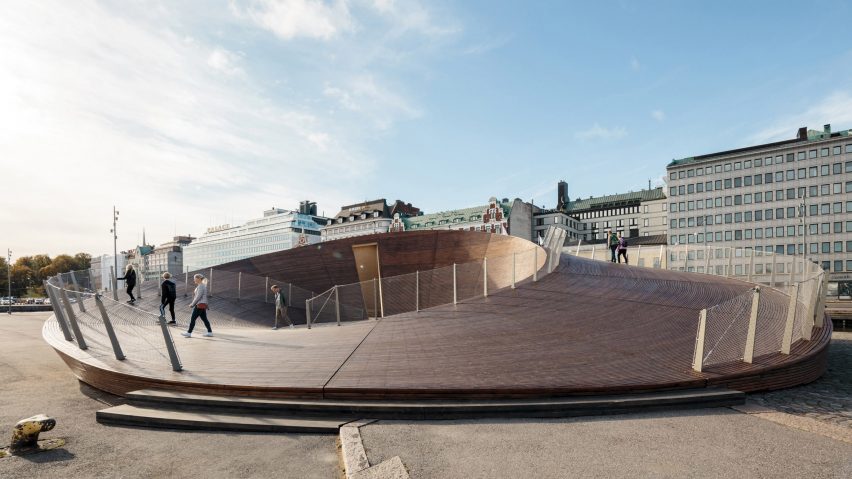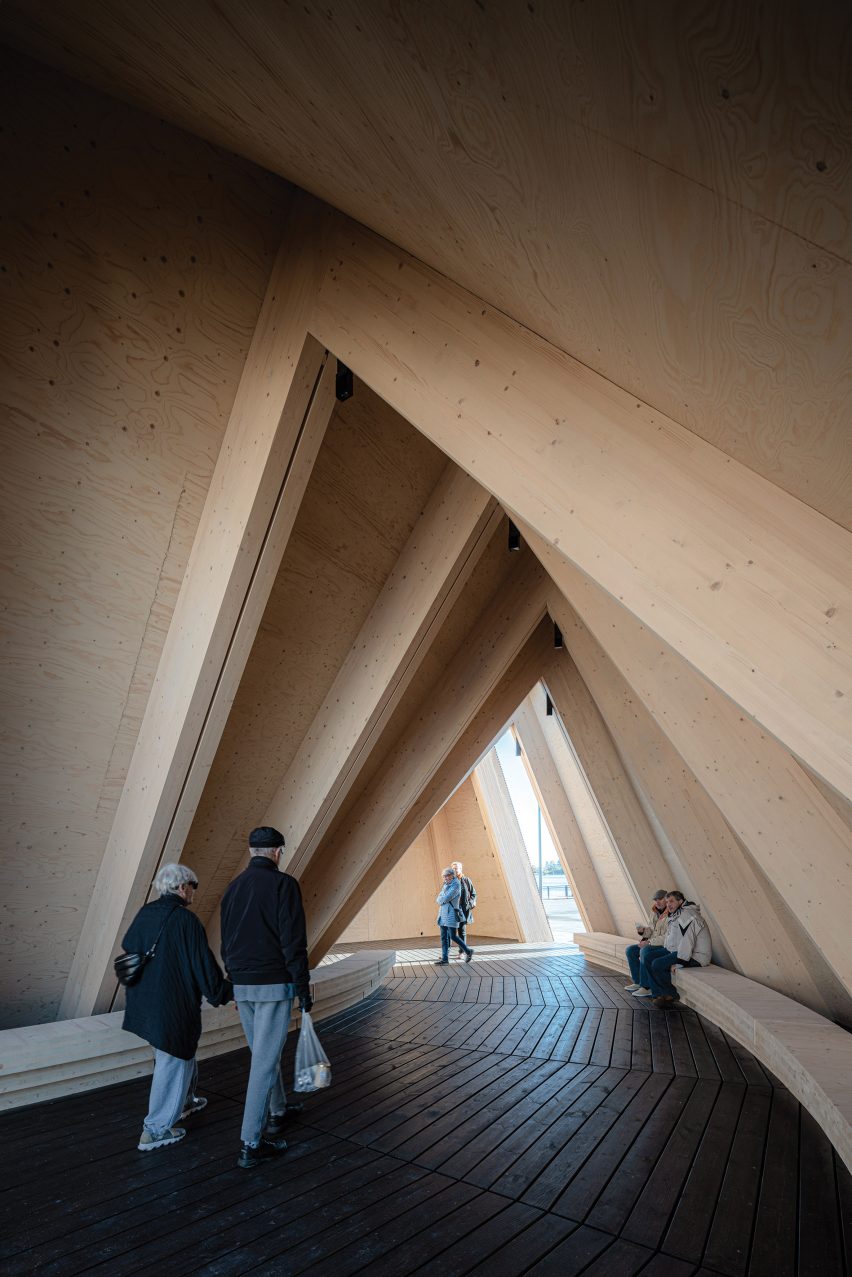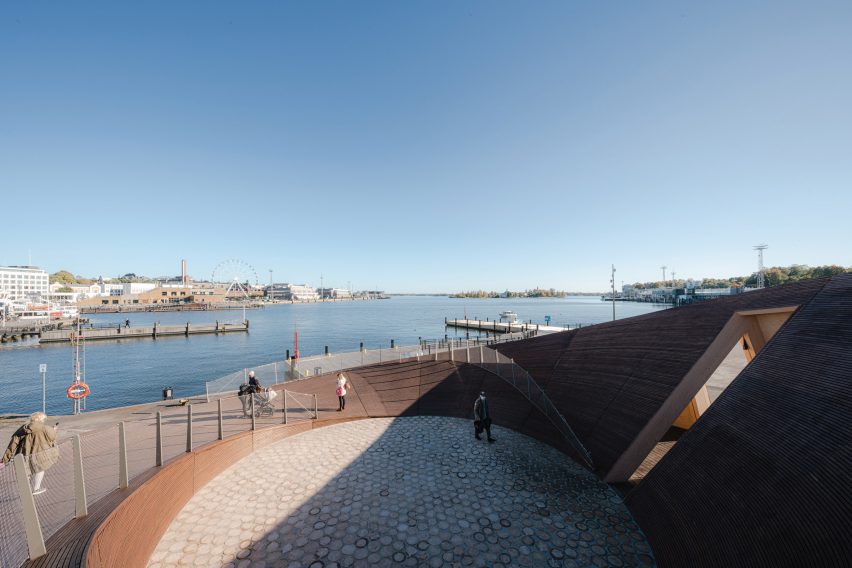
Verstas Architects evokes island landscapes with Helsinki Biennial Pavilion
Finnish practice Verstas Architects has created a circular timber pavilion at Helsinki's South Harbour, forging a connection between the city and the nearby island of Vallisaari.
Verstas Architects built the pavilion to serve as an entry point to the Helsinki Biennial art festival, which was held on Vallisaari island from June to September 2021, and it has now become a permanent addition to the city.

Tickets for the Biennial are sold from the pavilion, which sits at Lyypekinlaituri, South Harbour, and the ferry to the island of Vallisaari departs from an adjoining pier.
The pavilion's shape and materiality reference the natural landscape of Vallisaari as well as the sea between it and Helsinki.

The circular shape is a nod to Vallisaari's ponds and "giant's kettles" pothole formations, while the timber walls are meant to recall the island's cliffs as well as the hulls of old wooden ships, some of which can be seen moored at South Harbour.
The pavilion features an inner courtyard paved with what looks from a distance like stone but, on closer inspection, prove to be crosscut logs.

"The curved shape echoes the island cliffs that were rounded during the ice age," Verstas Architects partner Ilkka Salminen told Dezeen.
"The centre yard is paved with greyed crosscut logs and white quartz sand that mimic the effect of raindrops rippling on water."

Around it is a partially enclosed space with curved dark pine walls that slope down in one section to form an outer deck that visitors can climb.
"The centre of the pavilion is where you can rest and take a break from the noisy and constantly moving city," added Salminen.
"You are closed off from the city life and you experience only the sea and the sky, enclosed by a huge wooden surface to lean your back on."

The pavilion is made from prefabricated modules constructed from glue-laminated timber frames, with steel ties and laminated veneer lumber cladding.
These are clad in fine-sawn pine battens that have been steam-bent into curving shapes and stained dark with a mix of tar and linseed oil.
Inside, the natural light wood colour is maintained with an oil treatment, and a series of triangular frames at different angles form a curved corridor with a pitched roof.
Verstas Architects chose to build with wood because, as well as being the traditional material for buildings and boats in the area, it is environmentally sustainable and long-lasting in the northern climate.

The modules were built in a carpenter's workshop in a nearby harbour town where the fabrication process was guided by a digital 3D building model, before being shipped to the site for installation.
The interior of the pavilion contains a ticket sales and visitor information desk, while a simple rectangular volume next to it houses ancillary spaces.

The Helsinki Biennial Pavilion was commissioned by the City of Helsinki's Urban Environment Division as part of a strategy to make the city's archipelago more accessible.
Spanning 187 square metres, the pavilion provides a visible anchor for the Biennial in the city.

Although the original intention was to dismantle the pavilion in between Biennials and store the modules at Vallisaari, the City of Helsinki and Verstas Architects have decided to leave it at South Harbour for the foreseeable future.
"It was quickly realised that the pavilion has a much bigger role to play if left to stand in place all year round," said Verstas Architects.
"It provides a place for people to hang out by the sea," the studio added.
"One can rest on the sloping auditorium-like space observing the colourful marketplace or seek shelter under the tent-like roof."

The pavilion is located near the forthcoming Makasiiniranta port development at South Harbour, which will include a new architecture and design museum.
It was also the site of the scrapped proposal for a Guggenheim museum, with the City of Helsinki deciding to instead support a local institution for the site.
Verstas Architects was founded in 2004 by Salminen with Väinö Nikkilä, Jussi Palva and Riina Palva. The practice has recently been nominated for the Finnish Wood Award and EU Mies Award for the Helsinki Biennial Pavilion.